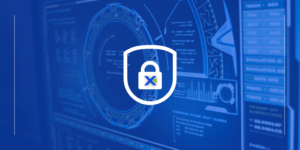Security Advantages of Software Defined Networking (SDN) – Xigent

Since the introduction of software-defined networking (SDN) in 2011, the spread of SDN has been somewhat slow. That is, until recently, when cloud architectures have become industry-dominant, and businesses look for opportunities to reduce the complexities that accompany a diverse cloud stack. The SDN market has been rising rapidly along with cloud adoption. In fact, Global Marketing Insights predicts that SDN networking will be an $88 billion industry by 2024.
For organizations in hyper-sensitive business avenues such as finance, banking, security, and government, making the switch may enhance your network security and stabilization. At the same time, those firms who manage a complex array of apps may find SDN networking is more accessible and more easily managed.
Let’s break down what SDN is, its security advantages, weaknesses, and everything in between.
Software-Defined Network vs. Traditional Network
In traditional networking models, devices make package and traffic decisions via a unique routing table. Each network device acts as an individual agent capable of commanding its own communication with networking applications.
On the other hand, a software-defined network uses an SDN controller to manage interactions between applications and network devices. This means that all devices are contained in a centralized hub, and communications between network devices and applications are processed abstractly.
Therefore, network engineers can manage the network via the SDN controller without the need to access individual networking devices. This process not only reduces human touchpoints and redundancies but also frees up each device to be assessed and edited at a granular level.
Security
Today, cybersecurity elements are a mission-critical aspect of any business’s networking structure, especially for companies such as banks, credit unions, and credit companies.
There are distinct benefits that SDNs provide these types of institutions that traditional networking simply cannot. At the same time, it does have some drawbacks that are important to consider before making the switch.
Pros
-
Granular Security
: A primary advantage of SDN networking is greater visibility throughout the network. In traditional networking, any security that impacts traffic is overarching. With SDN, it’s granular. This means that engineers can selectively block malicious traffic throughout your network on a granular basis. So, if any specific segments misbehave, you can deal with them accordingly. It’s like having high-powered X-ray specs for your network. What used to take hours of manual pour-over can be achieved in moments with the added clarity that a singular centralized hub provides. Issues with suspicious traffic coming from your bank’s network? Quarantine the traffic to be reviewed later without disrupting your entire network. Malicious activity within your network? Identify it immediately and shut it down. SDN networks give operators more power, control, flexibility, and visibility.
-
Updates:
When critical security patches come through, manually configuring them on each device can be demanding and potentially lead to misconfigurations or missed devices. Within the SDN controller, each device can be updated without the need to access physical devices. All updates can be spread accurately and rapidly throughout the network.
-
Hardware Restrictions:
The SDN controller enhances control over your entire network, which means each device no longer has the authority to make package decisions. This gives businesses greater control over their network without the need to work within the confines of proprietary hardware controls.
Of course, other benefits arise out of SDN networking, such as the use of SD-WAN to abstract network control virtually through a business’s WAN. But these aren’t directly SDN benefits — they exist through SDN networking technology. As with any business solution, one must weigh the benefits against potential pitfalls.
Cons
-
Single Attack Point:
The most obvious security con with SDN networks is that attackers only have to access one node in your network — the SDN controller — to have control of your entire network security. This is why it’s critical to choose a secure SDN network provider and use security elements that protect the SDN controller from outside threats. The SDN controller makes each device in the network more secure, but it makes your entire network vulnerable to a single successful attack against that SDN controller.
-
Vendors:
Since there isn’t a hyper-specific definition of an SDN network, many vendors package their solutions as SDN — when in reality, they aren’t. This has been an ongoing issue since SDN/OpenFlow’s introduction into the market in 2011.
Other Benefits
SDN networking has many benefits outside of security that can drastically shift how organizations handle their networking.
-
Scope:
Traditional networking requires significant personnel and technical expertise spread throughout your network. Each hardware component must be maintained, and connections must be monitored broadly. An SDN network allows all these hardware components to be managed via a single touchpoint.
-
Mistakes:
Since each networking component requires separate handling, there’s the potential that one critical mistake could bring down your entire network.
-
Cloud Maneuverability:
As enterprises continue to embrace cloud solutions — especially networking applications — managing these solutions becomes painful with a traditional networking configuration. SDN networking allows you to control these app flows from one centralized hub.
Final Thoughts
Software-defined networking can abstract the array of networking nodes into one convenient platform. This makes maintaining connections, delivering critical updates, and quarantining security issues simple and effective. At the same time, SDN reduces touchpoints, introduces automation capabilities, and helps remove mundane and repetitive tasks from the networking workflow.
Switching to an SDN network can introduce opportunities, cut costs, and simplify operations. As with any technology, weighing the advantages against the disadvantages is essential. Not all SDN vendors deliver SDN products, and it’s vital that you choose a vendor with an emphasis on security and effectiveness.
Looking to make the switch to a faster, more connected software-defined networking solution? Contact us.
Get a Network Assessment















![Toni Kroos là ai? [ sự thật về tiểu sử đầy đủ Toni Kroos ]](https://evbn.org/wp-content/uploads/New-Project-6635-1671934592.jpg)


